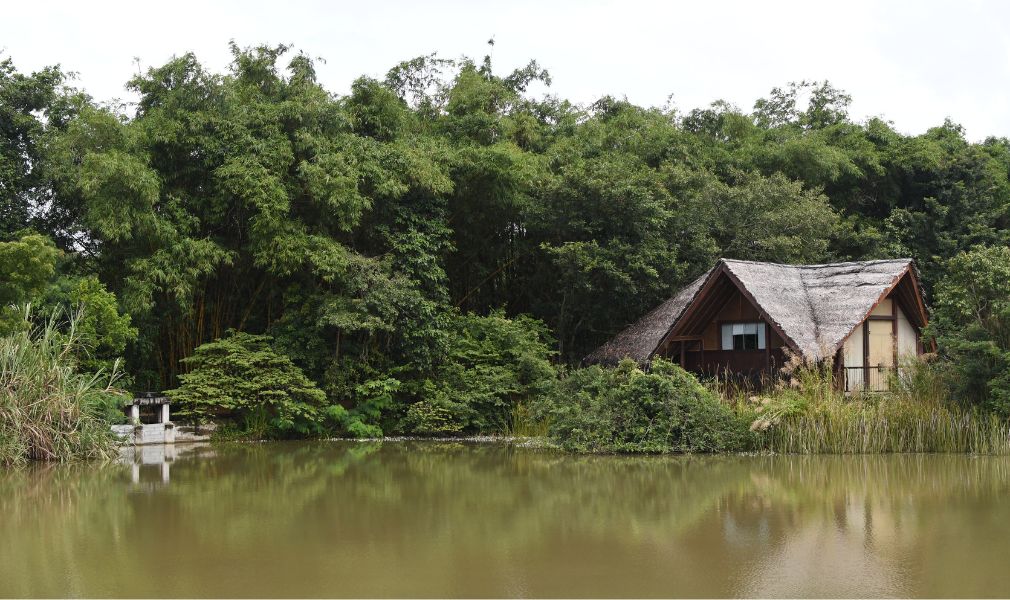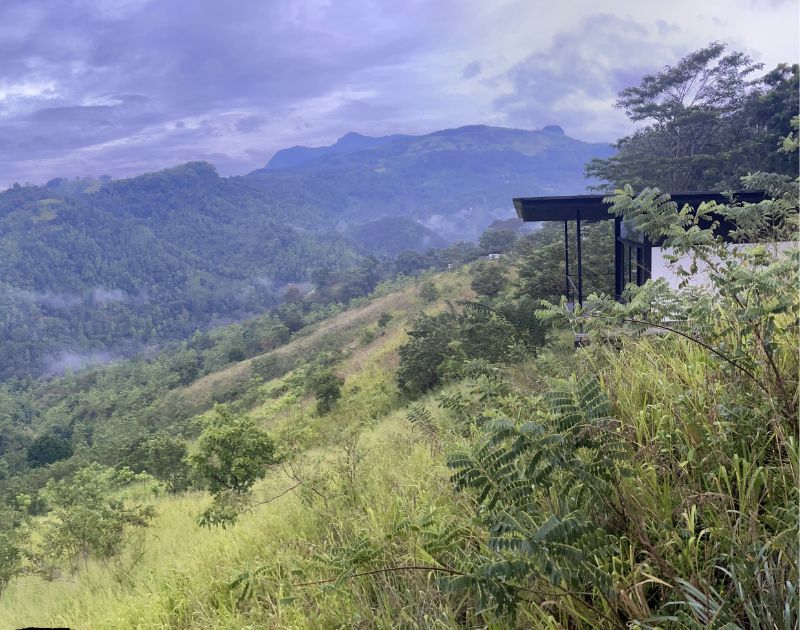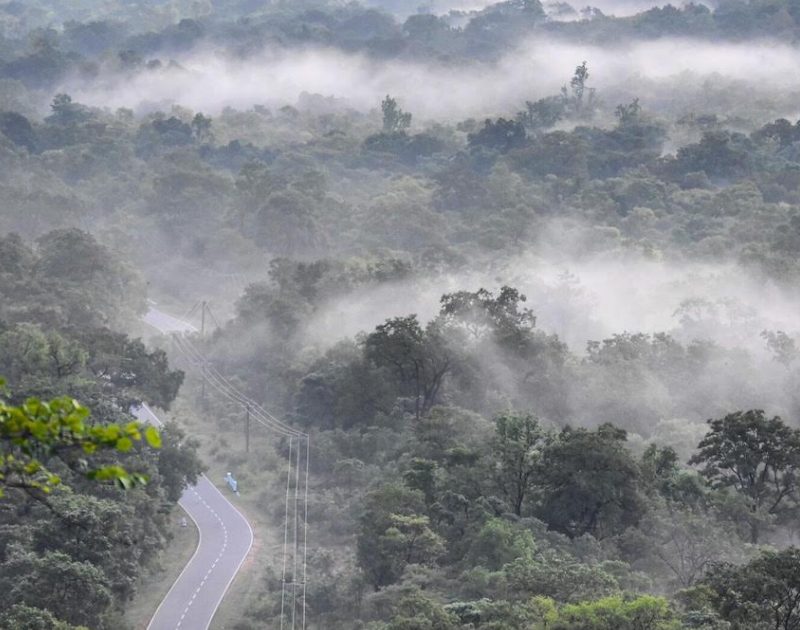
- Home
- Knowledge Insights
- Re-defining Destination Identities for Sustainable Tourism in Sri Lanka
“The tourism industry can be developed as an immediate measure to uplift the economy…We have good beaches, central hills, wildlife zones, good civilisation, and ancient inheritance which are ideal for tourism.” This is what then-presidential candidate Anura Dissanayake said at a penultimate-week rally while declaring the party’s intention to reach four million tourist arrivals per year, almost doubling the post-war peak of 2018. So, it was no surprise that when the president and his three-member cabinet of ministers were appointed, tourism was assigned to the President himself alongside traditionally critical portfolios such as defense, finance, energy, and economic development. It is the latest instance in which national leaders have prioritized the tourism sector in attempts to support economic recovery.
Sri Lanka’s tourism and nature – a paradoxical relationship
It is widely acknowledged that the traditional Sri Lankan tourism brand is overwhelmingly reliant on its endowed natural assets. In addition, nature-based tourism models conducted in protected areas are becoming increasingly sought after by tourists, both foreign and local. While Sri Lanka is a biodiversity hotspot, it is facing considerable environmental degradation and adverse impacts from climate change.
Unfortunately, Sri Lanka’s brand of tourism to date has adversely impacted the environment due to rapid, unsystematic, and unsustainable tourism development. A popular and unfortunate example of this phenomenon is Ella, where within a decade, tourism mushroomed at such a speed and scale that it threatened to destabilize the surrounding environment. While some bright spots exist that show how to balance economic and environmental considerations, such examples are few and far between. By and large, the tourism sector is yet to meaningfully integrate nature at the core of the country’s tourism business model. Some development partners are beginning to push the conversation forward by including such considerations in their lending programmes to the Government. Additionally, even if there is an increasing focus on environmental considerations in tourism, it is doubtful whether such initiatives can keep up with the fast-growing demand-side stresses from short-sighted promotional efforts that are prioritizing boosting short-term gains over longevity.
There are many factors often cited as barriers to making tourism truly sustainable – ranging from a lack of regulation, and lack of enforcement, to management issues, and political influences. However, these factors alone may not explain why although Sri Lanka markets its tourist attractions to be ‘wild’, ‘pristine’ and ‘scenic’, tourism development on the ground is far from protecting such qualities. So could this gap also be symptomatic of a conceptual disconnect between Sri Lanka tourism’s brand aspirations and the ground realities of Sri Lankan tourism destinations?
Destination identities – Moving beyond ‘top-down’ destination branding
Destination branding is the process of building a unique image which aims to differentiate a tourism destination from its competitors. At the national level, Sri Lanka has engaged in multiple (and short-lived) destination branding efforts in the past – from ‘Land like no other’ in the year 2000, to the current ‘You’ll come back for more’. Additionally, and in parallel, provincial tourism authorities have launched sub-national destination branding, for instance, Discover Wayamba: Kingdom of Diversity’.
While there are many conceptions of what destination branding entails, the Digital Tourism Think Tank (DTTT) identifies three fundamental drivers of a destination brand: 1) reputation, 2) identity, and 3) perception. While reputation captures tourists’ beliefs and opinions, perceptions are subjective interpretations of tourist experiences. What is critical to our conversation is identity, which according to DTTT “has to be driven by authenticity, unique selling points of the destination, consistency and strong personality.” So a destination brand should be inspired by, and rooted in, the destination identity. Building destination brands without clarifying destination identities is like building a house without a foundation – unsustainable.
At the national level, the constantly changing destination branding efforts (three during the last decade, and several more before) hint that Sri Lanka has not established a clear sense of destination identity. There is even less discussion about the efficacy of provincial destination branding efforts.
The strength of Sri Lanka’s natural and cultural endowments lies in the diverse spread of such places across the country, with each place having its own unique selling proposition. For example, Kurunegala, Kalpitiya, and Wilpattu are three destinations located within the North Western Province (Wayamba Tourism). Though located nearby, each of these destinations has very different tourism and environmental attributes. However, beyond occasional (and often project-focused) stakeholder consultations, little formal efforts have been made to collaboratively develop the identity of each of these destinations. So, alongside national destination branding, should we also be flipping the equation and thinking about building up sub-national destination identities? Would formulating such ‘local’ identities that place nature at their core inspire and facilitate truly sustainable tourism? A deeper look into how destination identities can be formed could be a starting point for answering these questions.
Formulating destination identities – Aspects to consider
There are many ways in which destinations have set out to formulate their identities, and there is a non-convergent body of literature analyzing this process. So, the following are some considerations that would be pertinent to Sri Lanka’s context if we are to start co-discovering local destination identities.
Kalpitiya and Yala – Starting points for ‘co-discovering’ destination identity?
How can co-discovering destination identities potentially mitigate adverse impacts from tourism to nature in Sri Lanka A good place to start could be Kalpitiya, where the delays in proceeding with an island-development project offer the opportunity for a re-think. The SLTDA initiated the Kalpitiya Island Resort Project back in 2010 when there were little to none of the current tourist activities that Kalpitiya is well-known for today. Since then, the Sri Lanka Tourism Development Authority (SLTDA) has leased out 10 islands in Kalpitiya to 7 investors with an aim of spurring tourism footfall and local development. Some of these islands have been leased for more than a decade, but investors have not been able to commence any of the projects, prompting the SLTDA to threaten lease cancellations if projects do not commence soon. Reasons for not proceeding with the resort projects included the changing geology of the islands and the opposition by fisher communities who are using the islands. These problems seem to stem from a misalignment between SLTDA’s vision for Kalpitiya through this Island Resort Project and destination identity factors such as natural resource features and local activities. A collaborative exercise to formulate Kalpitiya’s destination identity before commencing such resource-intensive tourism projects may not only ensure that tourism activities practiced in Kalpitiya are just by its people and nature, but also that investment propositions made by SLTDA are credible, bankable, and sustainable.
The destination branding of the Yala National Park is a different case. The park is traditionally known for several charismatic species (leopard, elephant and sloth bear). The branding in Yala has prominently highlighted the elusive leopard and promoted it as a park with the highest leopard densities in the world. This has resulted in supply-side actors such as tourist establishments and jeep drivers placing an unhealthily high value on leopard sightings in Yala, despite the growing evidence that visitor satisfaction is not entirely reliant on leopard sightings (Egrisi and Prakash, 2019; Fernando et al. 2024). During our field work, local tourism actors noted that they are actively reducing the emphasis on the leopard due to concerns about overcrowding and misbehavior during leopard sightings. There are arguments for and against deprioritising the emphasis on the leopard (or any one animal) in the destination branding of Yala. Even as Yala’s troubles are often talked about, there has been no consistent and meaningful effort to discuss and collaboratively shape what Yala’s destination identity should be, with the diverse (and indeed evolving) range of local tourism actors operating here. A ‘co-discovery’ process would bring the different actors to the same page, as well as give them a greater sense of ownership for the sustainability of the destination. This is critical especially in the context of Yala where the solution to overcrowding relies on a behavioral change from many different actors – from government authorities, to hoteliers, jeep drivers, guides, and travel agents.
Formulating destination identities: Policy space for ‘Co-discovery’?
Encouragingly, there is no shortage of high-level policy recognition for many of these ideas. Although the Strategic Plan for Tourism 2022-2025 does not specifically mention collaborative branding approaches, it recognises authenticity and diversity as guiding visions. Its gap analysis identified the need for holistic positioning, branding, and marketing. It places emphasis on local-level awareness campaigns on sustainable tourism and community engagement initiatives.
The more recent National Tourism Policy emphasizes that all stakeholders – public and private – must have a voice in tourism development. It focuses on integrated governance which includes restructuring the sub-national governance of the sector to better involve local actors and position tourism in regional development agendas.
In the recently concluded Presidential elections, both the leading presidential candidates’ parties published their own comprehensive tourism policies ahead of the election, which had an increased focus on themes relating to sub-national destination identity. The Samagi Jana Sandhanaya (SJS) policy document recognized the complexity and sensitivity of the interactions between tourism and local communities. It placed particular emphasis on “working with local communities to develop genuine and distinctive tourism experiences” to “foster ownership and pride in local tourism developments”. Meanwhile, the Jathika Jana Balawegaya (NPP) policy document posits formulating a nationwide destination branding for Sri Lanka – to be a green destination “offering authentic experiences, ensuring sustainability and inclusiveness”. It places a general emphasis on environmental considerations such as identifying the carrying capacities of destinations and reducing visual pollution. While it hasn’t said much about the process, it hoped to develop main tourist destinations and promote them with distinctive physical and iconic recognition involving town planners and architects.
In short, continuing Sri Lanka’s current brand of tourism development is not an option – it risks nature loss and threatens environmental sustainability. As Sri Lankan leaders once again tout higher tourist arrivals as a priority for economic recovery, there is an urgent need to rethink many aspects of our current tourism model. It is not just about formulating and projecting national destination brands, taglines, and campaigns. It is also about critically assessing, and re-defining, our destination identities. Such identities, if meaningfully crafted, may unlock pathways to make Sri Lanka’s tourism truly sustainable.
This article is an early glimpse into CSF’s research study on tourism and nature in Sri Lanka, that explored three tourism destinations (Kalpitiya, Yala, and Maskeliya). One of the themes drawn out from this work is around co-discovery of destination identities, which this article discusses. Future articles will discuss other themes, like destination management, tourism regulations, and tourism infrastructure stresses.


